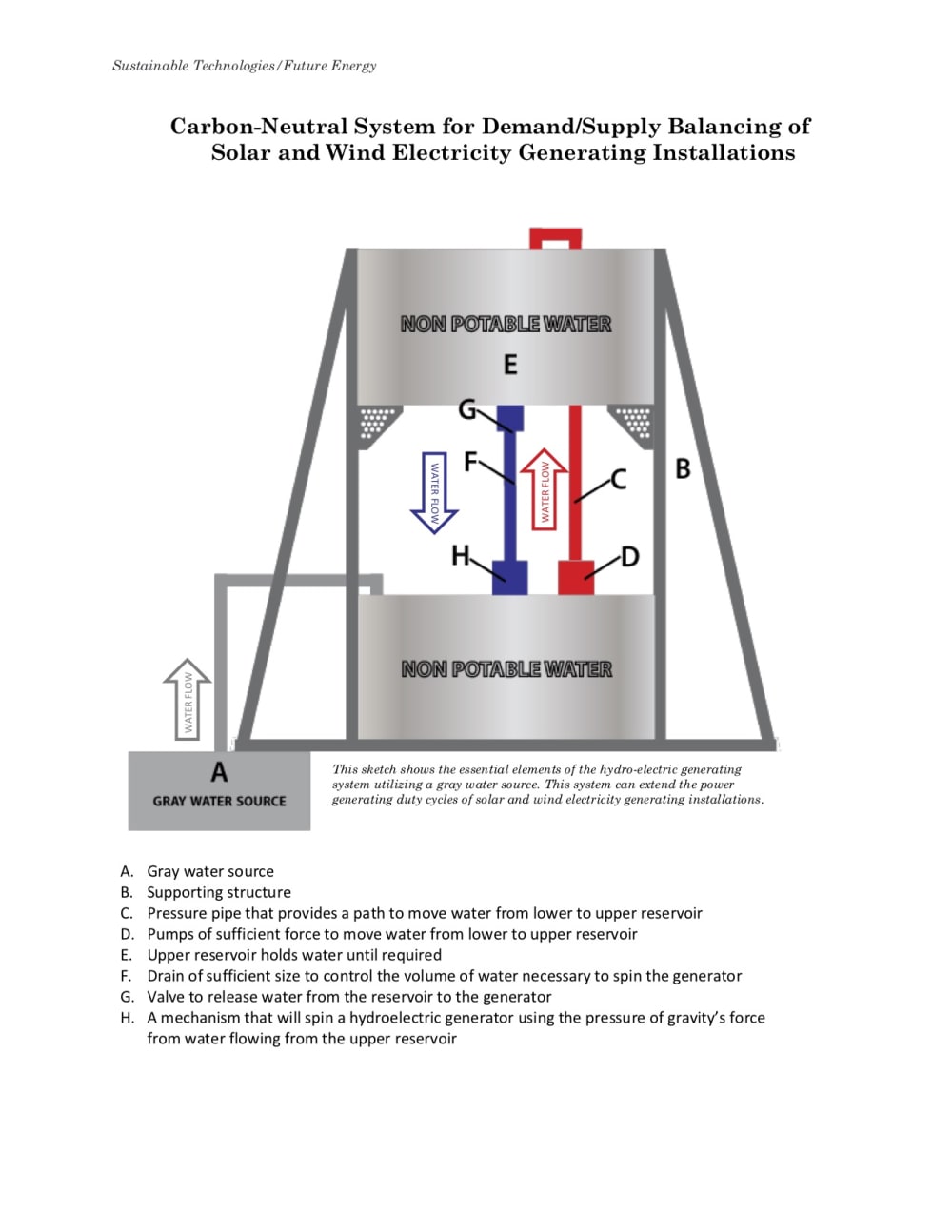What problem does this idea solve? Improvements in electrical device efficiency, such as replacing incandescent light bulbs with LED, have lowered total electrical consumption in the USA. While this trend will likely continue, the rapid transition to electric vehicles is estimated to increase demand for electricity by 10 to 15 percent, negating gains made through efficiency. Forward-thinking countries realize that without expanding solar and wind (S&W) generation, this trend will result in delayed discontinuation of carbon-based power generation.
What are the potential benefits of this idea? S&W cannot continually produce power, as the sun is not always shining, and the wind is not constantly blowing. Yet S&W systems sometimes generate power that exceeds demand, but such power is not available when needed. There is currently no practical solution for storing this power for later use. This system provides a low-cost process so that S&W installations can continue to produce electricity when the sun is not shining, or the wind is not blowing.
How does this system work? S&W electricity produced above current demand levels generates no revenue; this “excess” power cannot be sold or stored. With this system, excess production powers pumps to move water to an elevated reservoir. When customer demands exceed supply ability, the upper reservoir releases water. Then gravity propels the water to spin a hydroelectric generator, thereby storing power without the use of chemical batteries. The water then recycles to the ground-level reservoir, then pumped to the elevated reservoir as excess power becomes available.
How is this system an improvement on what is currently available? Since it uses non-saleable power, there is virtually no incremental cost. Excess power can also power heaters to maintain above-freezing water temperature when climate dictates. The only competitors are battery systems suitable for residential solar installations. But batteries are too expensive for larger-scale systems, such as those used by governments and utilities. Also, batteries create environmental hazards during production, disposal, and recycling. Other than non-saleable power generated by S&W, this system’s only consumable is water, which it recycles. Its consumption of water is mainly from evaporation or leakage. This application is suited to using recycled (aka “gray”) water.
Where would this idea be applied? This idea offers power suppliers around the world a way to store energy from non-carbon-emitting sources without batteries.
What is the market potential? The potential is enormous and worldwide. Around 3,300 electric utility companies operate in the United States; about 200 of them supply most users. There are 16 major electric utilities in Canada, a net exporter of electricity to the United States. Virtually every country uses electrical power, and all those with carbon-emitting plants are targets for this technology to stretch their ability to deliver power generated by carbon-neutral sources.
How would this system be manufactured? This idea uses no novel manufacturing technologies. It relies on well-established techniques: pumps, pipes, valves, hydroelectric generators, electronic controllers, and liquid-storage tanks.
Like this entry?
-
About the Entrant
- Name:Irwin Zucker
- Type of entry:individual
- Software used for this entry:Adobe Illustrator
- Patent status:none

